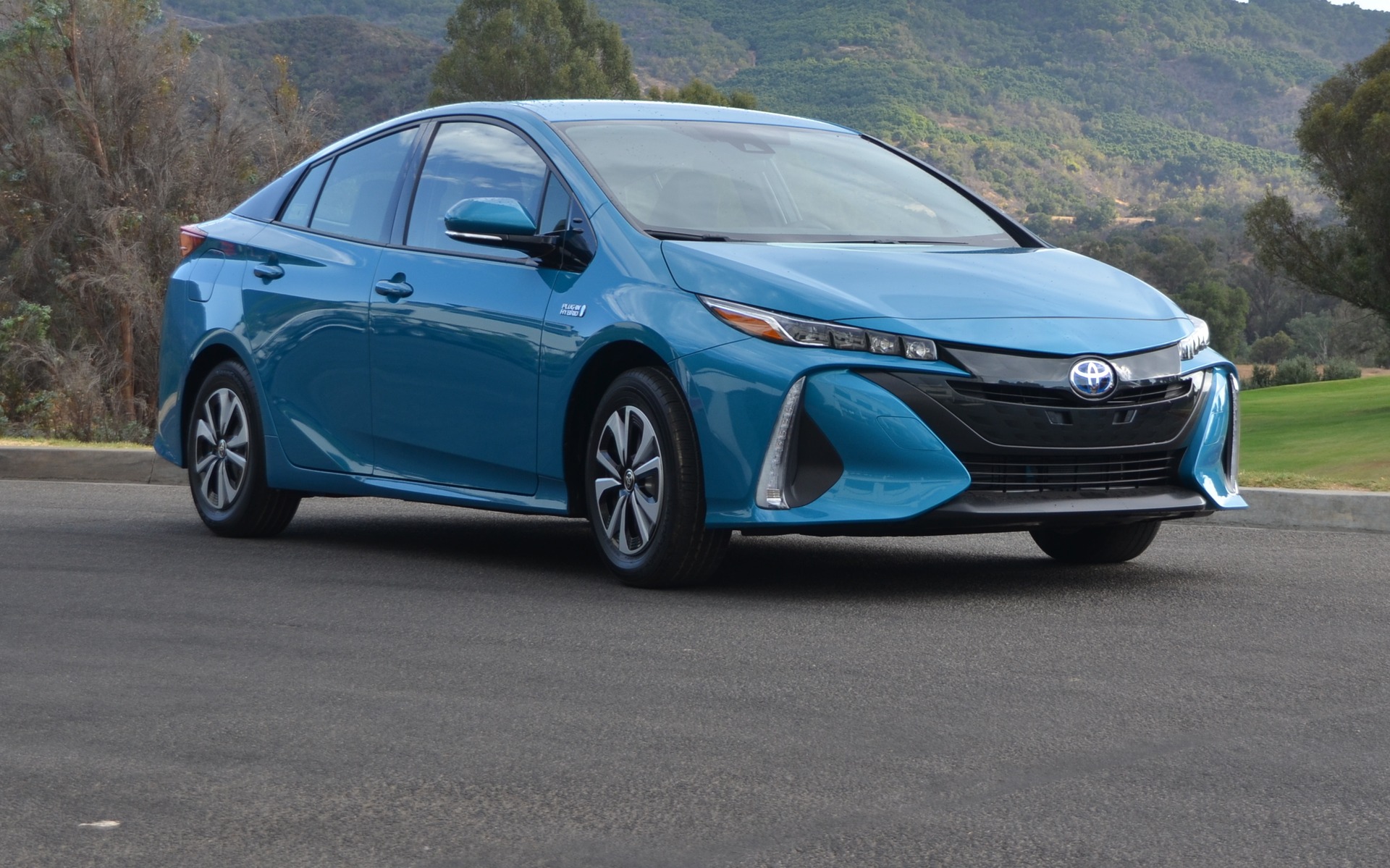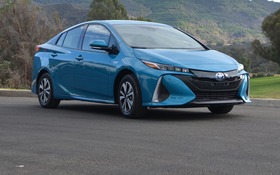2017 Toyota Prius Prime: Beyond the Looks…

| Strong points |
|
|---|---|
| Weak points |
|
Last week, a number of Canadian journalists were invited to attend the media launch of the new 2017 Toyota Prius Prime, a plug-in version of the next-generation Prius that offers an electric range of up to 35 kilometres.
As we found out, the Prime is much more than a juiced-up Prius, and also a lot more than the original Prius Plug-in that surfaced in 2012 and disappeared last year without anyone noticing.
- Also: 2017 Toyota Prius Prime is the new Prius plug-in hybrid
- Also: 2017 Toyota Prius Prime: New Plug-in Hybrid Unveiled in New York
First of all, the new Prime looks distinctive enough when parked next to a regular Prius. By the way, both models are quite polarizing in terms of exterior styling. No one can say Toyota designers drank the same old bland coffee, if you know what I mean.
The Prime’s tail is quite different with that inward curve on the rear window and hatch. This fancy design cue aims to improve aerodynamics, although one has to wonder how expensive the replacement bill will be in the event of a rear-end collision. Oh, and did I mention the hatch frame is made of carbon fibre to reduce its weight? Come to think of it, said replacement might cost you an arm and a leg. Maybe a lung, too!

It’s all in the battery!
From a technical standpoint, the Toyota Prius Prime stands out from the meagerly ionized Prius with a much larger-capacity battery: 8.8 kWh vs. 1.0 kWh. A full charge takes five and a half hours using a 120-volt power source or just two hours via a 240-volt outlet. The car’s regenerative braking system also replenishes the battery. Ditto for the 1.8-litre four-cylinder engine whose output has yet to be specified, but should be close to the regular Prius’ 95 horsepower since it’s the same exact unit.
Instead of a single EV mode, the new Prius Prime offers several. EV Auto is similar to the old Prius Plug-in, allowing the car to run on full battery power or with the help of the gasoline engine, as determined by a computer, but with a bias toward electric. EV mode will exclusively rely on the electric motor even if you hammer the throttle. Of course, the battery needs to be sufficiently charged, a message on the dashboard will alert you.
Charge mode, meanwhile, forces the engine to restore the battery at a quicker pace, requiring the driver to hold and press the HV/EV button for about three seconds. This is not a typical generator a la Chevrolet Volt, after all. According to Toyota, the Prius Prime has an estimated efficiency equivalent to just 1.96 Le/100km, which is 22% better than the late Prius Plug-in. Total range, by the way, hovers around 965 kilometres.
Toyota’s calculation
The Toyota Prius Prime can reach speeds of 135 km/h purely on battery power. As mentioned earlier, Toyota claims a range of 35 kilometres, which seems like a gross miscalculation. Either that, or the company wanted to be conservative, because we easily travelled 49.6 kilometres in EV mode. Had my driving partner and I known the road better and exploited the various modes more effectively, we likely could have covered 56 kilometres before depleting the battery. Of course, to prevent that from happening, the gasoline engine steps in at some point, and it does so quite seamlessly. At the end of the day, our fuel consumption average was a fantastic 4.7 L/100km.
While we could not validate acceleration times, sprinting from 0-100 km/h in less than 10 seconds appears to be feasible, whether in electric or hybrid mode. CVTs are known for making the engine scream excessively, but that’s not the case with the Prius Prime, which is a real blessing.
Once you sit behind the wheel, you have to get used to the pedals, which are slightly offset to the right (don’t worry, it doesn’t take much time), and also the horizontally split rear window that somewhat affects visibility (fortunately, the concave glass doesn’t). Elsewhere, the Prime’s cargo area loses about 20% room compared to the regular Prius due to the significantly larger battery that takes away 100 millimetres (four inches) in load height. Said battery also encroaches on the passenger quarters, meaning there’s only room for four instead of five.

Prime’s limitations
Out on the road, the 2017 Toyota Prius Prime is a surprisingly pleasant driver, that is, if you accept the limitations of a hybrid car. Performance is not too shabby, while steering is precise with good feedback and a nice grip on the small wheel.
The Prime’s main weakness is the rubber underneath. Both the Bridgestone Ecopia and Toyo NanoEnergy tires on the tested models (195/65R15 in size) were clearly designed to offer the least possible rolling resistance. Sadly, that means you get far less traction than desired.
As it currently stands, the 2017 Toyota Prius Prime is more of an alternative to the larger Hyundai Sonata PHEV than the similarly sized Chevy Volt. It will arrive at dealerships next spring, with pricing to be announced a few weeks before that. If you like your green car to turn heads and make a fashion statement, the Toyota Prius Prime is definitely right for you. On the other hand, if you look for impressive EV range, go with a Tesla or the upcoming Chevy Bolt instead.











